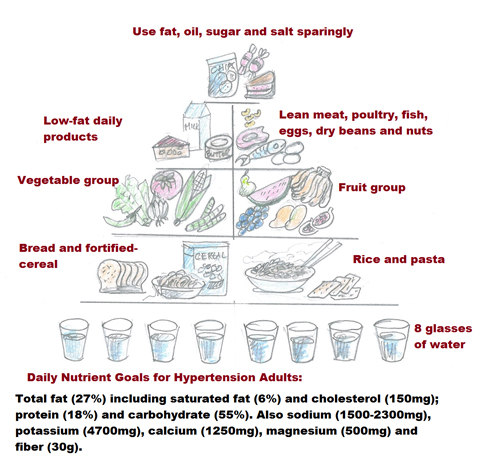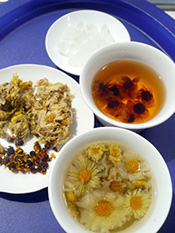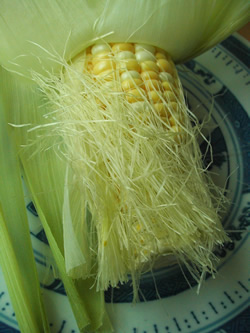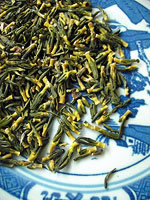Blood pressure less than 120/80 mm Hg is ideal and healthy, when the readings are 140/90 mmHg or higher, then it is diagnosed as hypertension. Blood pressure levels can be influenced by a wide variety of factors. For better management of hypertension, individuals should evaluate their conditions comprehensively, and compliant with
drug treatment along with lifestyle changes. Aggressive and long term management promotes the body working efficiently, and keeps the blood pressure in check, as a result, vascular complications are preventable and quality of life is ensured. Eating healthy is a simple and direct way to treat and prevent high blood pressure. For mild hypertension, doctors usually suggest changing diet as the first step, because non-medicinal approaches rather than taking antihypertensive medications are effective enough in most individuals.
Food tips for healthy blood pressure
If you are diagnosed with high blood pressure, cutting down the amount of fat, salt and caloric from the daily diet should always be considered firstly. You should also reduce the intake of alcohol, tobacco, coffee and heavily spicy foods. Eating less full and some gas production foods such as potato, sweet potato, red bean, taro, carrot, pumpkin, radish and chestnut should be limited too. In addition, exercise regularly in order to stay active.
A balanced diet with appropriate nutrients helps blood pressure under control:

The food choice pyramid for hypertension
- Reduce sodium intake: the recommended daily sodium intake is about one teaspoon of salt, however most people exceed it greatly. Foods in the natural state usually contain certain amount of sodium, it is necessary to be cautious about adding salt in cooking. Others such as processed foods, canned soups, frozen foods, snacks, marinated foods and condiments are high in sodium, always read the labels and make healthy choices when purchasing and consuming them. MSG (monosodium glutamate) is another form of sodium that often added in Chinese dishes.
- Increase potassium and calcium intakes: potassium counteracts the effects of sodium in hypertension development. The recommended intake is about 4,700 mg per day, which can be adequately absorbed through fruits and vegetables like spinach, beet, bitter melon, potato, pumpkin, soy bean, arrowhead, radish, leaf mustard, apricot, banana, tomato, raisin, tuna, nuts, malt, mushrooms, bamboo shoot, lotus seed, kelp, laver, and scallop. Calcium is also beneficial to lower blood pressure, calcium rich foods include daily products, sesame, soy bean, tofu, Chinese celery, turnip, kelp, laver, shrimp, black fungus, wolfberry, Chinese broccoli, three-colored amaranth, Chinese cabbage and daylily flower.
- Adequate dietary fiber: fibers in whole grains, nuts, vegetables and fruits promote a cleaner digestive system, and also improve cholesterol profiles, control body weight, and lower the risks of constipation, diabetes, and intestinal diseases. Some studies have showed that an increased fiber intake is associated with a lower blood pressure too. Just keep in mind that whole fruits or vegetables always have more fibers as well as nutrients then their juices.
Dietary cure is an essential part of traditional Chinese medicine (TCM). It has a long history and is still popular among the general public nowadays. As early as 200 BC, TCM has advocated that when diseases occur, drug treatment should be in the first place, then foods cures are followed to promote full recovery. Dietary cure can play an important role in disease recovery and general wellness.
A good eating habit is the foundation for hypertension control. According to TCM, foods that can soothe
liver, clear
heat, activate
blood, resolve
stasis and nourish
yin are beneficial to lower blood pressure and lipids. These food ingredients include leafy vegetables, soy products, kelp, laver, preserved jelly fish, honey,
hawthorn fruit, black fungus, mushroom, garlic, onion, tomato, celery, calabash, bitter gourd, wax gourd, water melon, kiwifruit, peach, apple, persimmon, banana, water chestnut, shepherd's-purse, spinach, carrot, tea leaf, lotus leaf, sunflower seed, and vinegar. In addition, cooking methods such as deep frying, roasting, hot pot and heavily spiced can change the
nature of food, which in turn disturbs the blood pressure and affects the actions of antihypertensive medications.
Researches have showed that some Chinese herbs such as cassia seed, mulberry mistletoes, eucommia bark,
red sage root, gambir vine stem,
epimedium,
hawthorn fruit, motherwort herb,
Sichuan lovage rhizome, oriental water-plantain rhizome, kudzu root,
notoginseng and
astragalus root help regulate blood pressure. Furthermore, they also help calm the mind, promote urination, regulate blood sugar and lipid levels, reduce blood platelet clotting, protect and enhance heart functioning, and improve blood circulation. It is beneficial to consume according to individual health needs.
Below are some drinks and herbal teas that suitable for hypertension:

Chrysanthemum tea
- Chrysanthemum tea
Chrysanthemum (5g) and Longjing leaf (3g); place in a cup, infuse with boiling water, and cover for ten minutes. The ingredients soothe the liver, clear heat and lower blood pressure. Drink the tea regularly helps minimize blood pressure fluctuations.
- Chrysanthemum, pagoda tree flower and green tea
Chrysanthemum (3g), pagoda tree flower (3g) and green tea leaf (3g); put in a cup, infuse with boiling water, and cover for ten minutes. The ingredients dispel wind and clear heat. Drink the tea regularly helps minimize blood pressure fluctuations, and relieve symptoms like headache, dizziness, and blurred vision.
- Honeysuckle and chrysanthemum tea
Chrysanthemum (5g), honeysuckle flower (5g), and hawthorn fruit (5g); put in a cup of boiling water, and infuse for ten minutes. Drinking regularly helps activate blood, resolve stasis, clear heat, dispel wind, and reduce blood pressure and lipids.
- Chrysanthemum and wolfberry tea
White chrysanthemum (3g), wolfberry (3g), cassia seed (3g); put in a cup, infuse with boiling water, and cover for ten minutes. The ingredients invigorate the liver and kidney, and dispel wind, which help stabilize blood pressure.
- Banana peel tea
Banana peel (100g) decocted, drink it regularly. The tea helps activate blood, resolve stasis, clear heat, promote intestinal movements, and lower blood pressure.
- Water melon peel and cassia seed drink
Water melon peel (15g) and cassia seed (5g); decocted to drink. This promotes body fluid production and urination, clears heat and dispels internal wind.
- Apple, celery and lemon juice
Apple and celery, 200g for each, squeezed for juice, and then add in a few drops of lemon juice. The mixed juice soothes liver, clears heat and lowers blood pressure.
- Carrot juice
Carrot (400g) and water (200ml), processed as juice, and add honey to taste. The drink helps reinforce spleen and liver, promote digestion, relieve blurred vision, clear heat and lower blood pressure.
- Fresh celery juice
Fresh celery (250g), squeezed for juice, add honey to taste. The juice soothes liver, clears heat and induces urination, which are suitable for hypertension accompanied with dizziness, headache, flushed face, bloodshot eyes, and hot urine.
- Hawthorn and orange juice
Prepare fresh hawthorn fruit (30g), two oranges and water chestnut (100g). Wash and crush the hawthorn fruits, and cook with 200ml of water for 20 minutes to make a solution. Squeeze the oranges and water chestnuts to get the juices. Mix the three solutions together and add sugar to taste. The juice helps lower blood lipids and pressure.
- Black fungus and persimmon drink
Dried persimmon (50g) and dried black fungus (6g), wash and slice the ingredients, simmer with 1000ml water until they thoroughly tendered, then add rock sugar to taste. The drink clears heat, moistens dryness, and harmonizes blood flow, which are suitable for older hypertension accompanied with chronic cough.
- Red date and black fungus drink
Red date (7-8 pieces) and black fungus (3-4 pieces); soak the ingredients fully, slice and cook with 1000ml of water with low heat, when the solution becomes sticky, turn off the heat and add brown sugar to taste. This drink nourishes yin, replenishes blood, activates blood flow and reduces the blood pressure.
 Mulberry mistletoes twig Mulberry mistletoes twig |
 Corn silk Corn silk |
 Lotus seed plumule Lotus seed plumule |
- Lotus plumule tea
Lotus plumules (2-3g), put in a cup, infuse with boiling water, cover for ten minutes, and add rock sugar to taste. The tea helps relieve hypertension related symptoms such as dizziness, distension headache, palpitations and insomnia.
- Corn silk tea
Dried corn silk (30g) places in a cup of boiling water and covers for ten minutes. The tea helps promote urination and lower blood pressure.
- Mulberry mistletoe tea
Mulberry mistletoe twig (dried 9g, or fresh 15g) and tea leaf (5g); put in a cup, infuse with boiling water, and cover for ten minutes. Mulberry mistletoe invigorates liver and kidney, and replenishes blood; regular drinking helps lower blood lipids, reduce the risk of arteriosclerosis and coronary disease.
- Dissolve lipids and soften vessel drink
Prepare hawthorn fruit (60g), Chinese safflower (40g), cassia seed (40g), and lotus leaf (24g); crush the ingredients, mix together, pour into a container and put aside. Every day, take two teaspoons of the mixture, put in a cup of boiling water and infuse for ten minutes. The tea actives blood flow, resolves stasis, and regulates liver function, which help lower blood lipids and pressure.
- Hawthorn fruit, lotus leaf and coix seed drink
Prepare hawthorn fruit, dried lotus leaf and coix seed (10g for each); decoct and add rock sugar to taste. The drink improves the overall metabolism, and also help reduce lipid formation and free blood circulation.
- Wolfberry and walnut tea
Prepare wolfberry fruit (15g), walnut (10g), and tall gastrodia tuber (5g), wash the ingredients, and cook with 500ml water for 20-30 minutes. Drink daily, the tea promotes organs functioning and stabilizes blood pressure.
- Wolfberry tea
Wolfberry (10g), schisandra (10g) and rock sugar (10g), prepare as hot tea. This nourishes the organs, and harmonizes the internal environment, which are suitable for hypertension accompanied with insomnia, ear ringing, blurred vision, sweating and fatigue.
- Sesame and wolfberry drink
Black sesame (5g), wolfberry (3g), fleeceflower root (3g), and white chrysanthemum (2g), prepare as hot tea. The ingredients invigorate the organs, and enhance the body to regulate blood pressure. This is suitable for older hypertension who accompanied other health problems.
- Siberian solomonseal rhizome and chrysanthemum drink
Siberian solomonseal rhizome (5g) and chrysanthemum (7g), decoct and drink as hot tea. The ingredients nourish the body, and regulate blood pressure, which are suitable for severe hypertension individuals, in particular those accompanied with diabetes.
- Sour steamed egg
Beat one egg in a bowl, add 30ml of rice vinegar, and 50ml of boiled water, stir the mixture, remove the bubbles, cover with aluminium foil and steam for 10 minutes. Serve in the morning. This can nourish the body, and soften the blood vessels, which are suitable for older hypertension.
- White fungus and egg dessert
White fungus (5g) soaked in water for one hour, slice and simmer with 700ml of water until it is fully tendered, beat one egg in the soup and stir immediately, add in 10ml of rice vinegar, and then add some sugar to taste. This can nourish the body and soften the blood vessels, which are suitable for older hypertension.
 The food choice pyramid for hypertension
The food choice pyramid for hypertension
 Chrysanthemum tea
Chrysanthemum tea
 Mulberry mistletoes twig
Mulberry mistletoes twig Corn silk
Corn silk Lotus seed plumule
Lotus seed plumule

